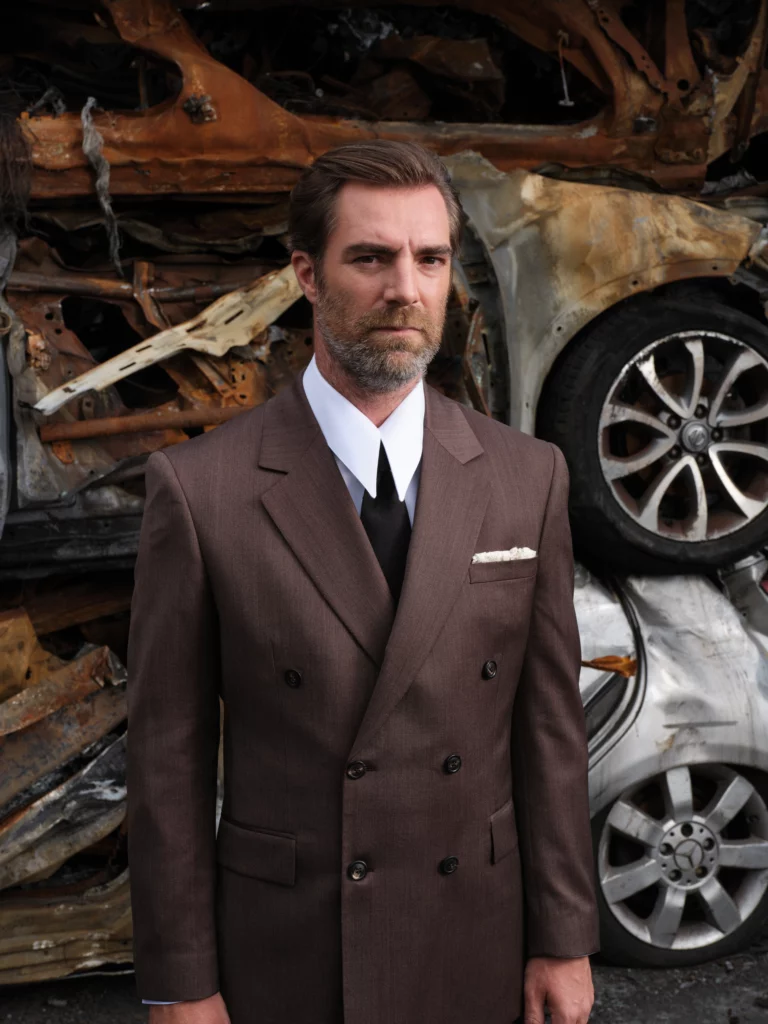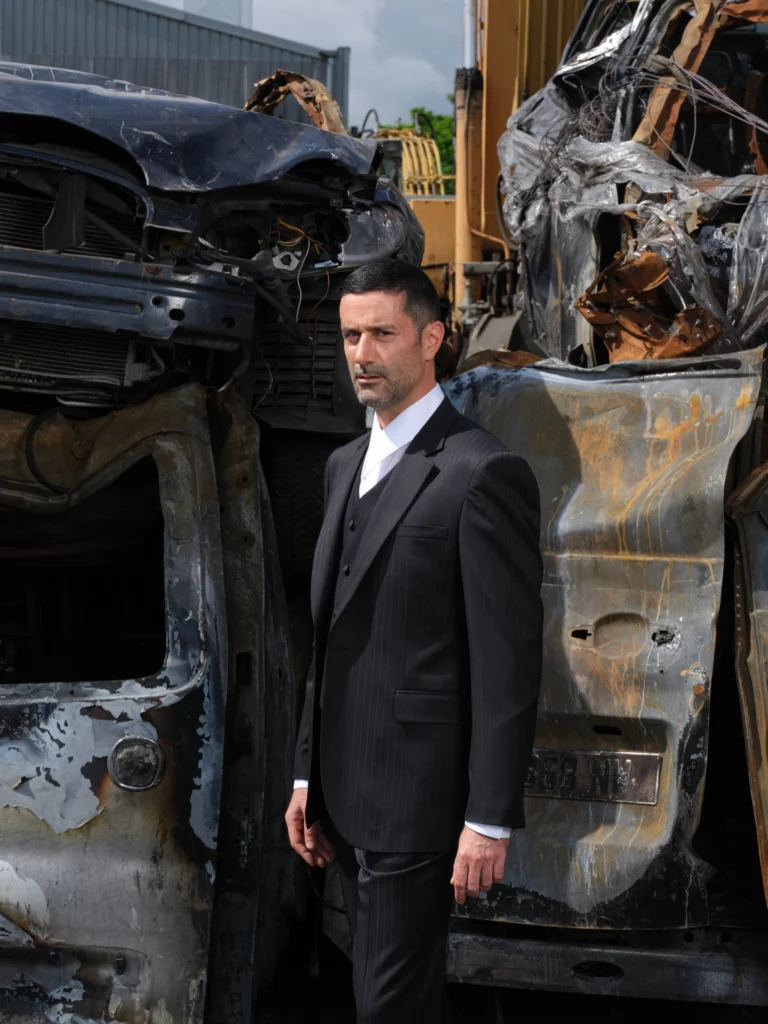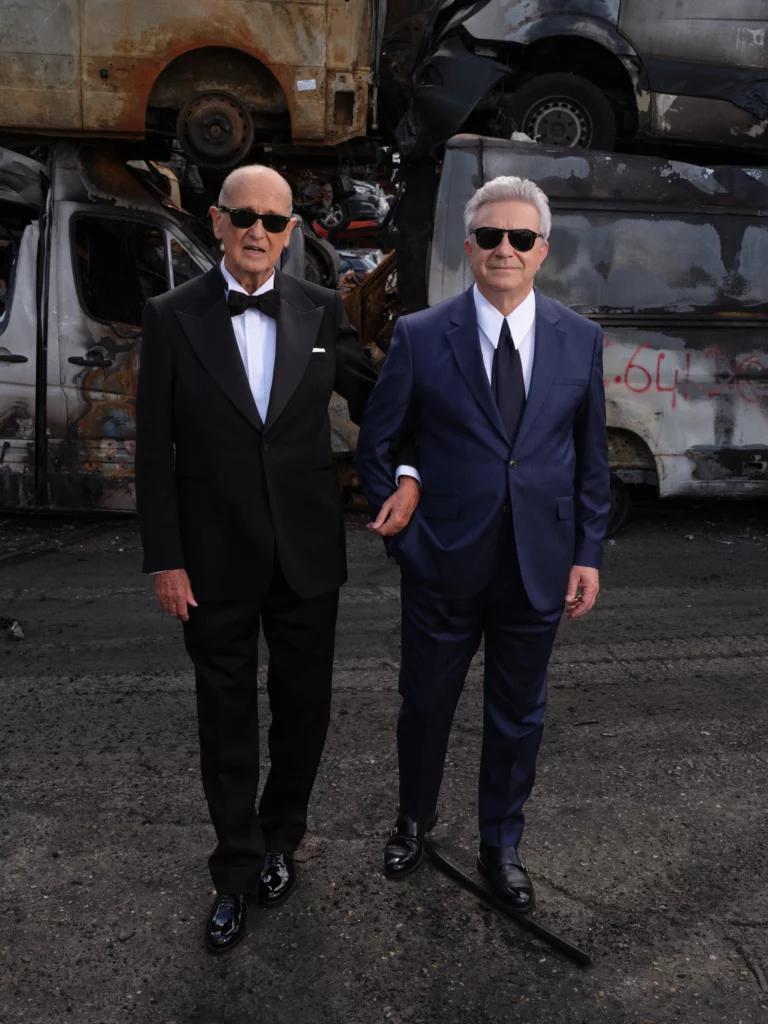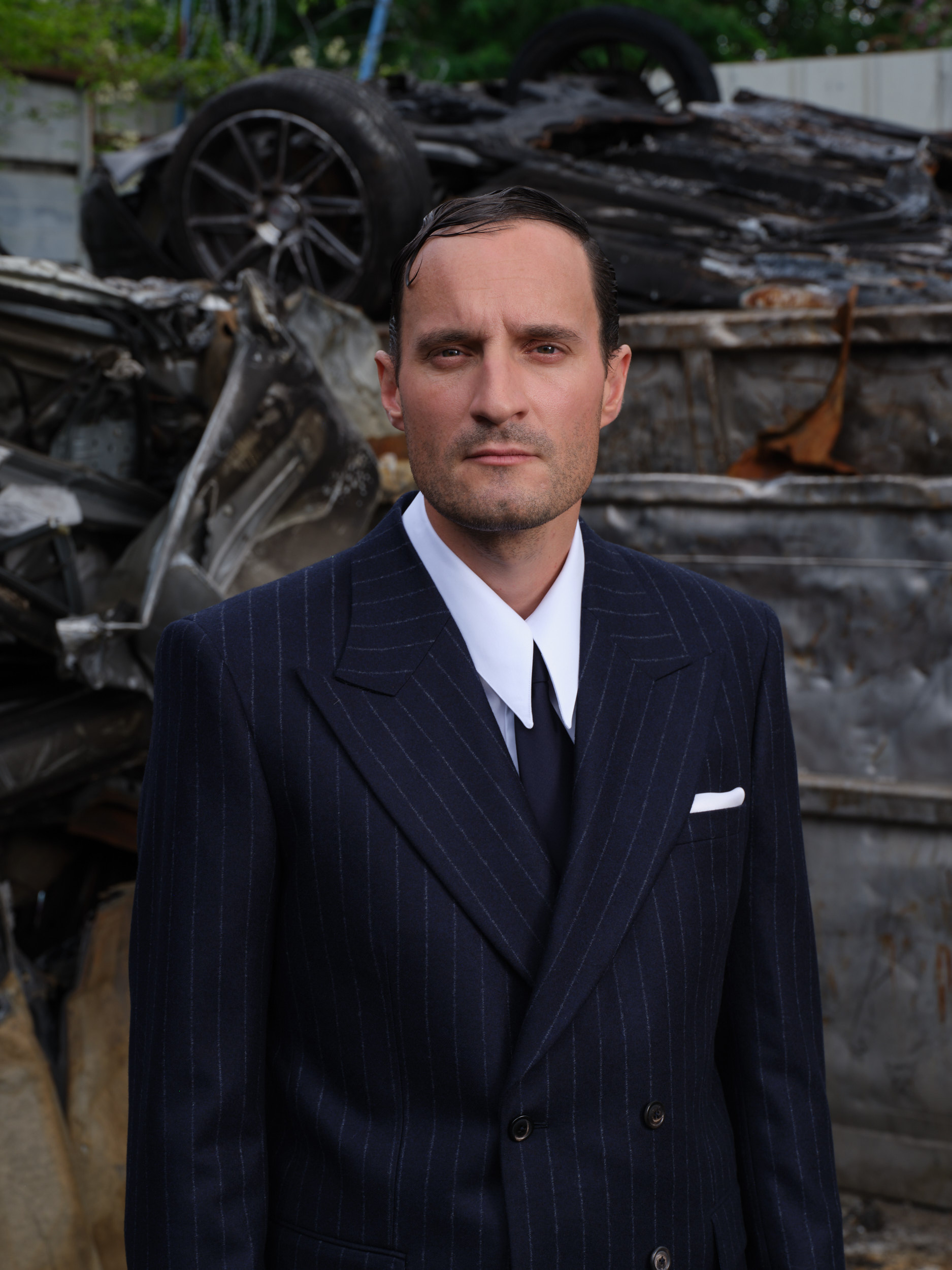In the history of Western dress, few garments have so vividly embodied societal shifts as the men’s suit. Like a mirror of the eras it has passed through, it has in turn embodied artisanal excellence, social conformism, then the rejection of convention, before being reborn today in a more personal and thoughtful form. This masterpiece of men’s wardrobes, which seemed doomed to obsolescence just a few years ago, is now experiencing a revival as unexpected as it is profound, driven by a generation in search of meaning and authenticity. At Rives, we take you on a rediscovery of the suit in all its splendor and beauty.

The golden age of costume: the first half of the 20ᵉ century
At the beginning of the 20th century, the suit reigned as the undisputed master of the male wardrobe. On the streets of Paris and in the countryside, they were worn by industrialists and workers, bankers and artists alike. This
The advent of ready-to-wear, driven by galloping industrialization, marked the first turning point. While the suit gained in accessibility, it gradually lost the
This period marked the apogee of a certain vision of masculine elegance, where refinement blended with natural casualness. In Parisian salons and on the boulevards, the suit embodied the perfect alliance between tradition and modernity.
The decline and rejection of costume: from the 80s to today
Then came the break. The 1980s brought two major changes. On the one hand,industrialization and the advent of ready-to-wear: ready-to-wear garments are meant to fit as many people as possible, so they don’t fit anyone perfectly.
The suit, a particularly demanding garment, quickly loses its superb look with shapeless cuts, excessively long sleeves and accordion-style Trousers. It became a kind ofshapeless uniform, intended primarily for professional wear.
On the other hand, society is changing, with some codes becoming more flexible and others disappearing. What was once a symbol of distinction and welcome conformism is gradually becoming synonymous with rigidity and old-fashionedness. Gone are the three-piece suits, suspenders, knee-highs and cufflinks. Jeans, T-shirts, sweatshirts, oversized sweaters and chunky sneakers are gradually taking over, even in professional circles.
The sartorial revolution is gathering pace: the American casual Friday is gradually spreading to the whole week, and sneakers are making their way into the corporate world. As for suits, they were relegated to weddings and other ceremonial occasions. Discover our collection of tailor-made suits for weddings. This period marks the advent of a more eccentric and colorful fashion, where sportswear and casual style take over from traditional formalism. Executives swapped their three-piece suits for more casual Outfits, symbols of a new sartorial freedom that reflected the profound changes taking place in society.


Contemporary renaissance: an elegant counter-current
After the decline of the suit, as is often the case in the history of fashion, the pendulum finally swings the other way. A new generation, perhaps tired of the ephemeral and disposable, is rediscovering the virtues of timeless elegance. Social networks are abuzz with the
This renaissance draws its inspiration from iconic figures who have marked the history of the suit: from the timeless elegance of James Bond to the presence of Michael Douglas in Wall Street, via the iconic silhouettes ofAudiard films from the 60s. New generations are rediscovering these dress codes with fresh eyes, appropriating the signature details of these icons.
The younger generation is looking for elegant cuts and timeless pieces. The focus is on what looks good on us, what enhances us and our physique, our silhouette. What’s more, particular attention is paid to matching pieces (e.g. having the right pair of shoes), not least because of the democratization of both information and fashion.
Contemporary costume is no longer a social obligation, but a deliberate choice. It’s no longer a matter of conforming, but of subtly asserting a certain vision of elegance.
This quest for elegance is part of a wider movement, in which traditional craftsmanship is regaining its nobility, driven by young people seeking authenticity and durability in their clothing choices.
Tailor-made: a new quest for meaning in clothing
In the wake of the contemporary renaissance, tailor-made clothing has come to be seen as the ultimate expression of a unique personality. This return to the roots of menswear embodies a fascinating paradox: by reviving the
In this renaissance, time regains its nobility. Each step becomes a precious moment:
- the meticulous choice of fabrics,
- in-depth discussions with the tailor,
- successive fittings to refine the silhouette.
Finally, tailor-made is no longer simply a question of perfect fit, but becomes the expression of a philosophy in which every detail counts, and every decision is carefully weighed.
Such developments remind us that true elegance lies not in blindly following trends, but in patiently constructing a personal, timeless style. The Tailor-made suit in Paris thus becomes the witness to a personal story, where every fold, every button, every finish tells something about its owner, creating a unique piece that gracefully stands the test of time.
In this quest for excellence, the use of experts becomes a decisive step, and this is precisely what we cultivate at RIVES . This intimate collaboration between consultant and customer instills a unique soul into each piece, transcending the simple notion of a garment to create an authentic, timeless clothing signature.

